Intel's New Classmate Tablet PC And More
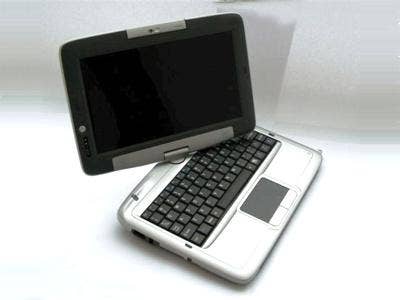
Intel believes low-power, Internet-ready notebooks and desktops are the wave of the future, and what's more, that its approximately 220,000 global system integrator and reseller partners are going to help drive sales of these small form-factor "netbooks" and "nettops" in a big way.
That was the message Tuesday at a channel-oriented press briefing at the fall Intel Developer Forum in San Francisco. Tom Rampone, GM of Intel's Channel Platforms Group, presented a sneak peak of hardware platforms and new designs like the Classmate Tablet PC (pictured) that the Santa Clara, Calif.-based chip giant is set to release through its distribution channel in the coming months.
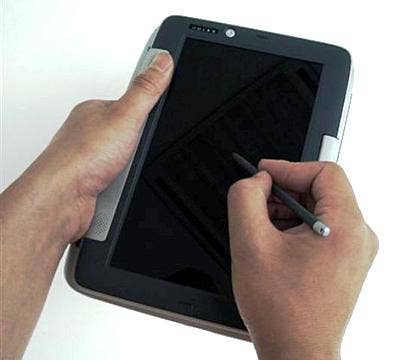
Intel built the Classmate PC on the heels of the One Laptop Per Child project's initiative to get computing devices into the hands of students in developing countries. That first wave of mobile PCs was based on a pure notebook design, but Intel's latest Classmate PC incorporates tablet, touch-screen and motion-sensing interaction technology to create a low-power, Net-connected Tablet PC for students around the world.
One of the main motivators for going with a tablet variation on the Classmate? The swiveling display flattens the unit, eliminating the visual obstruction between teacher and student on the older models, Rampone said.
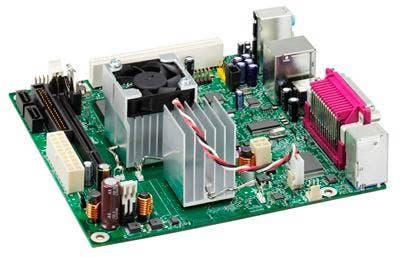
"and#91;Tand#93;here is a vacuum in the sub-$500 devices which allows for first-time users in the emerging markets, or basic users or second PC users in the mature markets, to access the Web, in a simple and affordable manner," according to Intel.
The chip maker's solution? "Nettop" motherboards like Intel's D945GCLF2, code named Little Falls 2, a desktop platform that runs on the newly released dual-core Atom Processor 330. Little Falls 2 is set to be shipped in September and Intel says more than a dozen chassis manufacturers are building compatible chassis for basic PCs and more exotic vertical usage models such as Internet kiosks and thin clients.
Representing the "newest mini-ITX form factor," Little Falls 2 is integrated with the Intel 945GC Express chipset with Intel GMA 950 on-board graphics. It supports up to 2GB of DDR2 memory and is upgradable with a PCI expansion slot. There's also an IDE connector supporting up to two ATA 100/66 devices, and integrated 10/100/1000 Mb/s Ethernet LAN connectivity. Audio is six-channel Hi-Def, up to eight USB 2.0 ports are supported, and the rig also has two Serial ATA ports and an S-Video connector.
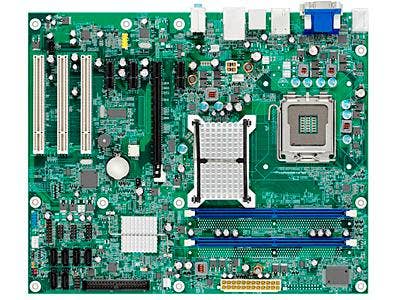
The DG43NB desktop board was one of four channel-oriented desktop platforms announced by Intel at IDF. Based on Intel's G43 Express chipset, the DG43NB introduces next-gen Intel graphics technology that includes Intel Graphics Media Accelerator X4500 with Clear Video Technology for enhanced HD video playback.
All four new desktop motherboards include Intel's Remote Wake technology, providing remote access over the Internet to home PCs even when they're in sleep mode.
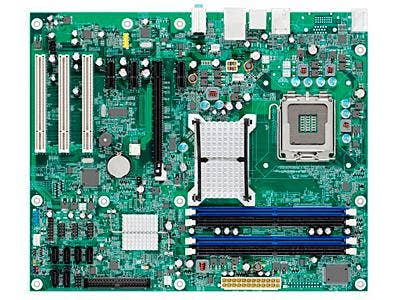
Like the DG43NB, the DP43TF motherboard (pictured) runs on Core 2 Duo and Core 2 Quad processors, and is Microsoft Windows Vista Premium WHQL-certified. The DP43TF features the Intel P43 Express chipset.
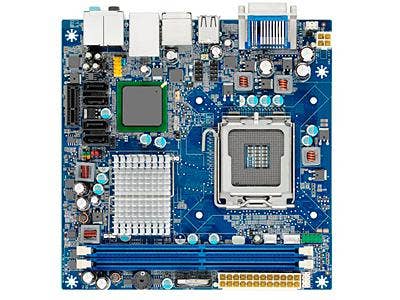
Intel's DG45FC (pictured) and DG45ID desktop motherboards support the G45 Express chipset, Intel HD Video and Dolby Home Theatre, and carry the extra product designation "Media Series." The chip maker describes the DG45FC Media Series board as "a small and powerful platform that caters for a rich digital home entertainment experience."
Like Little Falls 2, the board is designated for the mini-ITX form factor, though the DG45FC runs on Core 2 Duo processors in the LGA775 package rather than Atoms. The chipset delivers up to 4GB of support for DDR2 800/667 SDRAM. Five Serial ATA ports have RAID capability and an Intel 82567LF Gigabit Ethernet Controller. The DG45FC also features Intel High Definition Audio with 7.1 surround sound and is coupled with the Dolby Control Center interface. The board has one PCI Express x1 connector, 10 Hi-Speed USB 2.0 ports and one eSATA back port.
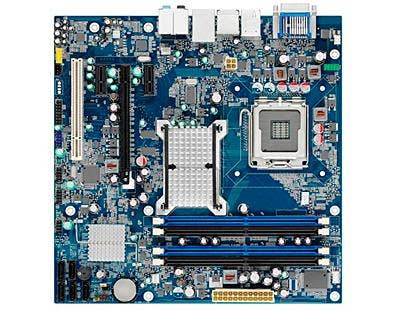
Intel's DG45ID Media Series motherboard supports Intel Core 2 Duo and Quad processors, the G45 Express chipset, Intel HD Video and Dolby Home Theatre. This desktop board "is targeted at home entertainment users who want to bring best-in-class entertainment to their living rooms," according to the chip giant.
The Intel LGA775 package delivers 1333/1066/800 MHz system bus, while integrated graphics is supplied by GMA X4500HD with Clear Video Technology. Also present: dual-channel DDR2 800/667 memory support, and four DIMM sockets designed to support up to 8GB of DDR2 800/667 SDRAM memory. Discrete graphics upgrades are made possible with one PCI Express 2.0 x16 graphics connector delivering up to 16 GBps bandwidth per port, double that of PCI Express 1.0. The motherboard has five Serial ATA ports with RAID capability to facilitate high-speed storage and data transfers at up to 3.0 Gbps with data protection features.
Intel's 82567LF Gigabit Ethernet Controller delivers onboard 10/100/1000 Mbps Ethernet LAN connectivity. Audio specs include Intel High Definition Audio with 7.1 surround sound and Dolby Home Theater.
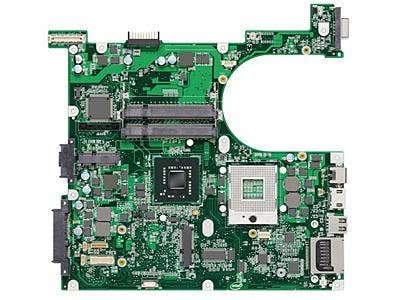
Intel's whitebook channel initiative moves into the mature phase with a pair of mobile motherboards, code named Rich Creek 2. The chip maker's Mobile Board MGM45RM (pictured) is for consumer notebooks, while Mobile Board MGM45WU is intended for business users. The boards are based on the new Rich Creek 2 mobile motherboard form factor specification and represent the culmination of Intel's years-long effort to develop common building blocks for whitebook hardware.
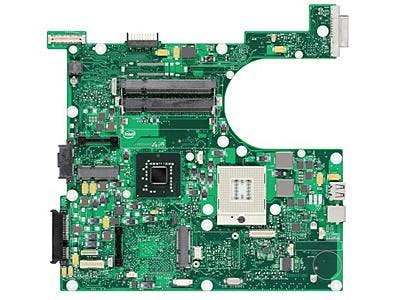
So far, only a select few Intel system integrator partners have been invited to join the chip maker's Rich Creek 2 pilot program. These include North American regional system builders like Seneca Data of Syracuse, N.Y., and Minneapolis-based Equus Computer Systems and total "about a dozen pilot customers hitting the mark with these whitebooks globally," according to Rampone, who added that the next phase of Rich Creek 2 will be "substantially larger."
The new boards, Mobile Board MGM45RM and Mobile Board MGM45WU (pictured), are full Centrino 2 platforms with similar specifications to other notebook boards built around Intel's latest mobile processor and chipset technology, formerly code named Montevina.